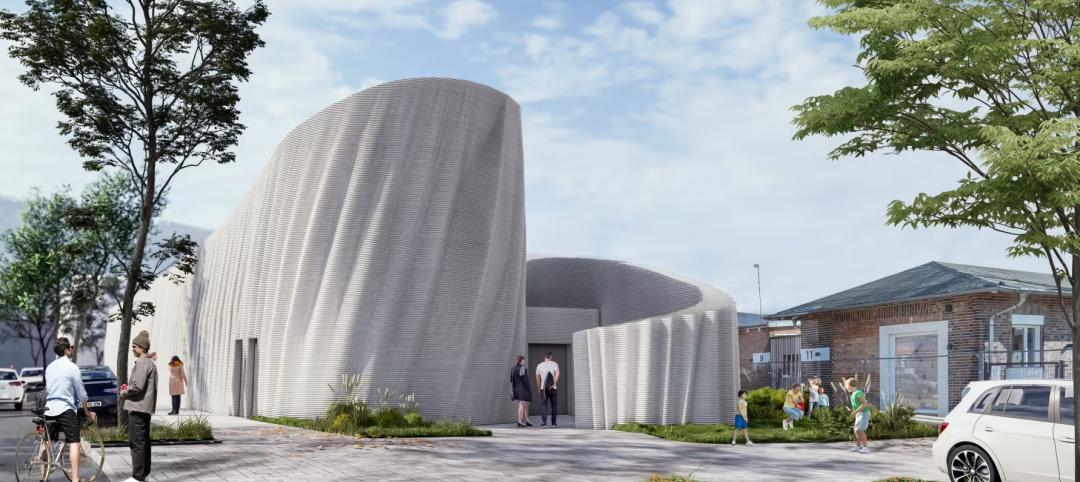For the past five years, Google has been running its own Healthy Materials program, which evaluates products for their potential health risks to employees.
That program worked fine when Google was just renting space and only had to worry about things like off gassing from furniture or paint. But when the search engine giant got into ground-up construction, “we were running into a lot of commodities” whose content wasn’t always transparent, says Drew Wenzel, Google’s campus design technical specialist. Consequently, the company wasn’t getting answers about products fast enough to make informed design, construction, and cost decisions.
“We tried to do this ourselves on one big project, and then asked ourselves if there was a better way,” says Wenzel.
That better way, he believes, is the Quartz Project, a year-long collaborative effort that Google entered into with Healthy Building Network, think step (a sustainable software provider), and Flux. Quartz Project is providing what it touts to be the AEC industry’s first free and open-source initiative that brings health and environmental information on 100 building products into a single database.
“Too many design decisions are still being made without the benefit of this information,” Drew tells BD+C. This database, he explains, allows designers and engineers to incorporate the data into existing analytical and design tools.
The Quartz Project launched its database at the VERGE 2015 conference in late October. Since then, “there’s been a lot of excitement in the AEC community” about the product, says Vivian Dien, a product manager for Flux and its Quartz Project Lead. The collaborative will be giving demos of its portal at Greenbuild in Washington D.C. next week.
This database offers product profiles for 100 commonly used building materials, from acoustical ceiling panels to XPS insulation. The information for each product includes its general composition, impurities, health profile (the product’s various health risks as a percentage of its total content weight), and environmental profile (such as Cradle-to-gate LCA results, end-of-life treatment, and so forth).
Dien says Healthy Building Network did an extensive scan of existing research and information to assemble this database. HBN was also charged with vetting the information.
The main value of this database, say Dien and Wenzel, is aggregating and standardizing product data into an open-source environment. They are quick to note, though, that the Quartz Project has avoided assigning specific health risks to individual products. “The risk portion needs to be carefully thought out,” says Wenzel. “We hope that software engineers will look at this database to develop tools that can integrate this information into a Revit model to have conversations early in the design process.”
They also see this database as a “benchmark,” which can be used to understand a product’s health baseline and to track improvements.
The Quartz Project is the industry’s latest effort to bring greater transparency to product content. Other prominent groups in this arena include the Health Product Declaration Collaborative, an open-standard format for reporting material content and potential health hazards; and The Cradle-to-Cradle Institute, with its five levels of certification for products as they travel a path to meet the organization’s criteria for material health, reutilization, renewable energy and carbon management, water stewardship, and social fairness.
Wenzel views those other sources as “predominantly” for products “that are unique or highly controlled.” Whereas the primary purpose of the Quartz Project’s database, he says, is as “an early-phase design tool.”
Related Stories
Mass Timber | Jul 11, 2023
5 solutions to acoustic issues in mass timber buildings
For all its advantages, mass timber also has a less-heralded quality: its acoustic challenges. Exposed wood ceilings and floors have led to issues with excessive noise. Mass timber experts offer practical solutions to the top five acoustic issues in mass timber buildings.
Apartments | Jun 27, 2023
Dallas high-rise multifamily tower is first in state to receive WELL Gold certification
HALL Arts Residences, 28-story luxury residential high-rise in the Dallas Arts District, recently became the first high-rise multifamily tower in Texas to receive WELL Gold Certification, a designation issued by the International WELL Building Institute. The HKS-designed condominium tower was designed with numerous wellness details.
Building Materials | Jun 14, 2023
Construction input prices fall 0.6% in May 2023
Construction input prices fell 0.6% in May compared to the previous month, according to an Associated Builders and Contractors analysis of the U.S. Bureau of Labor Statistics’ Producer Price Index data released today. Nonresidential construction input prices declined 0.5% for the month.
Mass Timber | Jun 13, 2023
Mass timber construction featured in two-story mixed-use art gallery and wine bar in Silicon Valley
The Edes Building, a two-story art gallery and wine bar in the Silicon Valley community of Morgan Hill, will prominently feature mass timber. Cross-laminated timber (CLT) and glulam posts and beams were specified for aesthetics, biophilic properties, and a reduced carbon footprint compared to concrete and steel alternatives.
Cladding and Facade Systems | Jun 5, 2023
27 important questions about façade leakage
Walter P Moore’s Darek Brandt discusses the key questions building owners and property managers should be asking to determine the health of their building's façade.
AEC Tech | May 9, 2023
4 insights on building product manufacturers getting ‘smart’
Overall, half of building product manufacturers plan to invest in one or more areas of technology in the next three years.
Building Technology | May 4, 2023
3D printing for construction advances in Germany
The largest 3D-printed building in Europe will have a much lower carbon footprint.
Mass Timber | May 3, 2023
Gensler-designed mid-rise will be Houston’s first mass timber commercial office building
A Houston project plans to achieve two firsts: the city’s first mass timber commercial office project, and the state of Texas’s first commercial office building targeting net zero energy operational carbon upon completion next year. Framework @ Block 10 is owned and managed by Hicks Ventures, a Houston-based development company.
3D Printing | Apr 11, 2023
University of Michigan’s DART Laboratory unveils Shell Wall—a concrete wall that’s lightweight and freeform 3D printed
The University of Michigan’s DART Laboratory has unveiled a new product called Shell Wall—which the organization describes as the first lightweight, freeform 3D printed and structurally reinforced concrete wall. The innovative product leverages DART Laboratory’s research and development on the use of 3D-printing technology to build structures that require less concrete.
Student Housing | Mar 13, 2023
University of Oklahoma, Missouri S&T add storm-safe spaces in student housing buildings for tornado protection
More universities are incorporating reinforced rooms in student housing designs to provide an extra layer of protection for students. Storm shelters have been included in recent KWK Architects-designed university projects in the Great Plains where there is a high incidence of tornadoes. Projects include Headington and Dunham Residential Colleges at the University of Oklahoma and the University Commons residential complex at Missouri S&T.

















